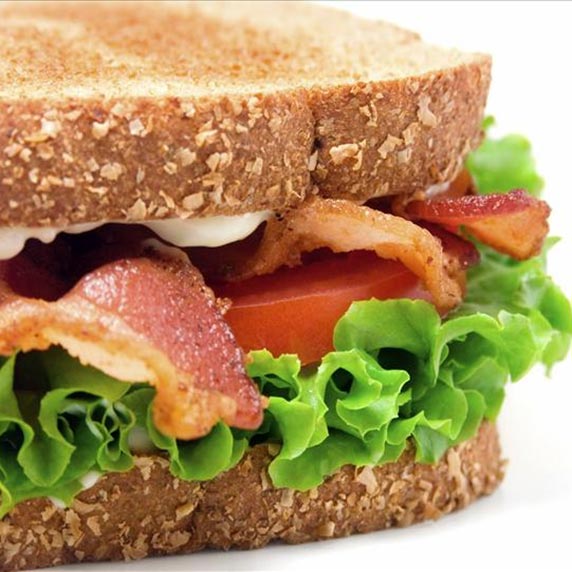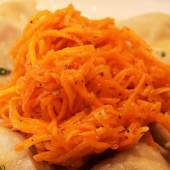The Sandwich

“A man's social rank is determined by the amount of bread he eats in a sandwich.”
– F. Scott Fitzgerald, The Beautiful and Damned
April, in case you didn’t know, is National Grilled Cheese Month. In light of that, it seems as good a time as any to reflect on the history, popularity, and seemingly infinite possibilities of the sandwich (including the grilled cheese).
As with so many things we love to eat today, the sandwich has been around in some incarnation since someone in an ancient culture came up with the idea of putting something between two pieces of something, that could then be easily consumed without the need for utensils.
Most experts agree, though, that the sandwich as we are familiar with it today came into being at the impetus of the 4th Earl of Sandwich, a British aristocrat named John Montagu. He lived from 1718 to 1792 and was known, in the parlance of the day, as a “profligate” (Merriam-Webster defines this as “a person given to wildly extravagant and usually grossly self-indulgent expenditure.” It was an apt description: Montagu, among his other vices, was an unusually dedicated gambler, and as the story goes, one day in 1762 during a marathon 24-hour card game, he asked his chef to create something he could eat with one hand while he held his cards in the other, so as not to interrupt the game. The result: a slab of cold beef between two slices of toast. And voilà! The sandwich was born, and possibly the concept of fast food as well. (Sadly, the chef’s name is lost to history, so the Earl of Sandwich has unjustly received all the credit.)

Earl of Sandwich John Montagu
The sandwich did not become popular on this side of the pond until the early 19th century, when recipes began to crop up with increasing regularity in cookbooks, but the trend really took off in the 1920s when white “sandwich bread” made its debut on grocery store shelves. The most prevalent filling, for a very long time, was ham. But soon, the composition of the sandwich became limited only by the maker’s imagination and the local availability of ingredients. Here are three of the most popular:
- Hamburger – Hamburg, Germany, believe it or not, was once known for its high quality beef, and patties of it, finely chopped and mixed with onions, garlic, and other spices became known as “Hamburg steaks.” They were brought to America by German immigrants in the 19th century, and were often the priciest item on a restaurant menu. Several food purveyors claimed to have been the first to put this “hamburger” on a bun, but there’s no definitive winner. It’s clear, though, that the hamburger really caught on for Americans at the 1904 World’s Fair in St. Louis.
- BLT – Nobody knows for sure who invented this or where it came from, except that it may be descended from Victorian tea sandwiches. Its name, though, may have a local connection: in the early 1920s, there was a legendary Chicago Tribune columnist, Bert Leston Taylor, who occasionally wrote about food, and there is a theory that this sandwich was named for him. Which doesn’t make much sense, since everyone knows its ingredients – Bacon, Lettuce, and Tomato.
- Finally, the sandwich we celebrate this month: the grilled cheese. Inspired by France’s croque monsieur, this easy-to-prepare mainstay didn’t become a thing in the U.S. until the invention of the bread slicer coincided with the advent of processed cheese slices (a marriage made in heaven). Fun pop culture reference: in the film Benny & Joon (1993), Johnny Depp famously grills them using a hot clothes iron. However you like to prepare them, they go wonderfully with tomato soup, a pairing which was devised by school cafeteria operators in the latter half of the 20th century, as the tomatoes satisfied their vitamin C requirement.
Of course, for those who are either carb-avoidant or gluten-intolerant, a sandwich can be made without any bread at all, due to a little innovation called the lettuce wrap.
Too many sandwiches, so little time: there’s also the ham, tuna, or egg salad; the Reuben; the club; the submarine; the French dip; the lobster roll; the muffuletta; the Sloppy Joe; the Italian beef; and many more. Enough to choose a different one for each day of the year – which might make for an interesting challenge. Make a list, and enjoy!





